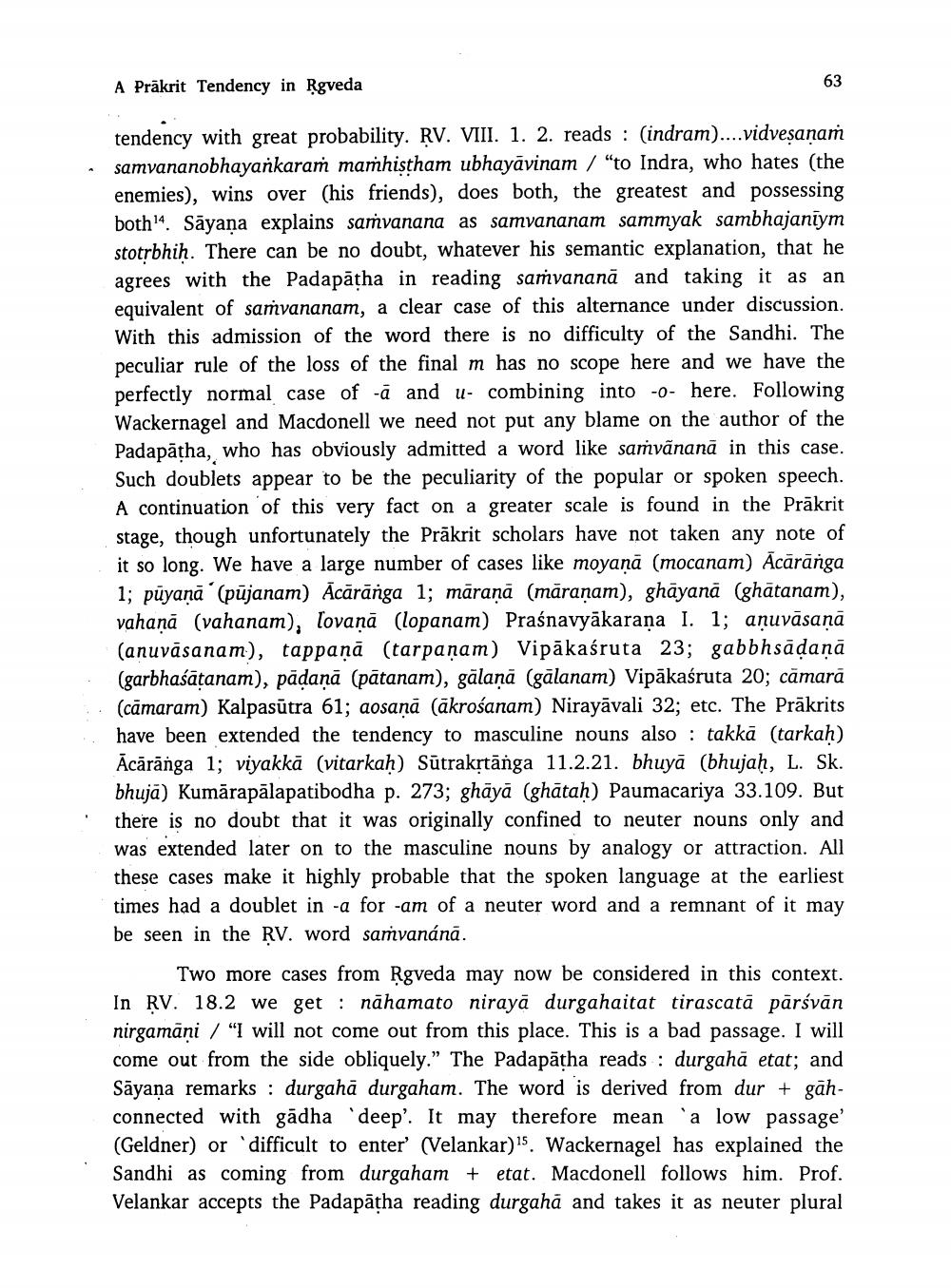________________
A Prākrit Tendency in Rgveda
63
tendency with great probability. RV. VIII. 1. 2. reads : (indram)....vidvesanam samvananobhayankaram mamhistham ubhayāvinam / "to Indra, who hates (the enemies), wins over (his friends), does both, the greatest and possessing both 4. Sāyana explains saṁvanana as samvananam sammyak sambhajanīym stotrbhih. There can be no doubt, whatever his semantic explanation, that he agrees with the Padapātha in reading samvananā and taking it as an equivalent of saṁvananam, a clear case of this alternance under discussion. With this admission of the word there is no difficulty of the Sandhi. The peculiar rule of the loss of the final m has no scope here and we have the perfectly normal case of -ā and u- combining into -0- here. Following Wackernagel and Macdonell we need not put any blame on the author of the Padapatha, who has obviously admitted a word like samvānanā in this case. Such doublets appear to be the peculiarity of the popular or spoken speech. A continuation of this very fact on a greater scale is found in the Prākrit stage, though unfortunately the Prākrit scholars have not taken any note of it so long. We have a large number of cases like moyanā (mocanam) Ācārānga 1; pūyanā" (pūjanam) Ācārānga 1; māraņā (māranam), ghāyanā (ghātanam), vahanā (vahanam), lovanā (lopanam) Praśnavyākarana I. 1; anuvāsanā (anuvāsanam), tappaņā (tarpaņam) Vipākaśruta 23; gabbhsādaņā (garbhaśātanam), pädaņā (pātanam), gälaņā (galanam) Vipākaśruta 20; camara (câmaram) Kalpasūtra 61; aosaņā (ākrośanam) Nirayāvali 32; etc. The Prākrits have been extended the tendency to masculine nouns also : takkā (tarkah) Ācārānga 1; viyakkā (vitarkah) Sūtrakrtānga 11.2.21. bhuyā (bhujah, L. Sk. bhuja) Kumārapālapatibodha p. 273; ghāyā (ghātaḥ) Paumacariya 33.109. But there is no doubt that it was originally confined to neuter nouns only and was extended later on to the masculine nouns by analogy or attraction. All these cases make it highly probable that the spoken language at the earliest times had a doublet in -a for -am of a neuter word and a remnant of it may be seen in the RV. word samvanánā.
Two more cases from Rgveda may now be considered in this context. In RV. 18.2 we get : nāhamato nirayā durgahaitat tirascatā pārsvān nirgamāni / "I will not come out from this place. This is a bad passage. I will come out from the side obliquely." The Padapātha reads : durgahā etat; and Sāyaṇa remarks: durgahā durgaham. The word is derived from dur + gāhconnected with gādha 'deep'. It may therefore mean 'a low passage' (Geldner) or 'difficult to enter' (Velankar)". Wackernagel has explained the Sandhi as coming from durgaham + etat. Macdonell follows him. Prof. Velankar accepts the Padapātha reading durgahā and takes it as neuter plural




